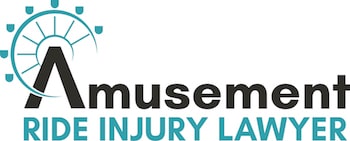Amusement Park Rides vs. Carnival Rides
Regulations
State regulation of traveling carnivals and fairs are non-existent in many states across the country. Only 17 states require state inspections of the fairs and rides. Most of New England, including Connecticut, only require third-party inspections. Carnivals and fairs go up and come down all summer long and into the fall in Connecticut. They also travel throughout the state. Many workers who are putting up the rides and taking them down work long hours and sometimes work in the summer heat and at night in the dark. Without having strict state inspections, and given the conditions that these workers work in, are these types of rides as safe as permanent rides at amusement parks?
Accidents
In 2012, a young worker in Virginia was operating a roller coaster at the state fair when one of the coasters came to a sudden stop. He did not see the coaster stop and did not hear the riders’ screams, causing the coaster behind them to crash into them. Six of the riders were left with severe back, neck, and head injuries.
A witness later said that the operator looked exhausted and could not speak English very well. Because carnivals usually include setup late at night and early in the morning, and they operate late into the night, ride operators are working for sometimes 24 hours straight. All it takes is one small mistake to lead to big consequences when operating a carnival with dozens of dangerous rides and thousands of people.
Issues
This accident points out a serious problem with many traveling carnivals and fairs. The workers who are taking down and assembling the rides are also the ones who are operating the rides for hours. Another issue is that carnivals do not make a huge profit margin. The amount of money that it takes to haul traveling rides, pay workers to assemble, take down, and operate rides, and pay all of the insurance fees, does not leave much of a profit for many carnival companies. Carnival workers do not make much money either, and these conditions may lead carnival companies and workers to not hesitate to cut corners with safety.
Amusement Park or Carnival Rides?
Carnival rides are usually considered to be sketchy looking, shaky, and look as though they might uproot and fall over. As far as the rides themselves, mobile rides, statistics show that more emergency visits result from amusement park rides as opposed to carnival rides.
However, carnivals have a short season, compared to amusement parks. Amusement parks usually open earlier is the year and stay open later than do carnivals, which have down time even during the season, for set up and take down. This being said, it is reported that about four people die every year from carnival rides, and one out of the four being a worker. One year, for example, 3,000 people were sent to the hospital for carnival ride injuries and 7,000 were sent for amusement park ride injuries.
Safety Precautions
It is best to be cautious and aware of safety hazards at both amusement parks and carnivals or fairs. Both have workers who may be working long hours, and may be tired and dehydrated. Before you put yourself or your child on a ride of any kind, observe the operator, and the rules and regulations of the ride. If you notice a ride operator drifting off, chatting while working, or just not paying attention; report it to the park manager.
Also, make sure that your children are aware of the rules and follow them. If the ride rules say to not carry any objects onto the ride with you and keep all arms and legs inside, make sure your child follows these rules. If you do not think that your child can follow the rules of the ride, go with them or maybe choose a different activity to do at the park.
Getting Help
If you or someone you know has been injured at a carnival, fair, or amusement park, call and speak to an attorney immediately and see if we can help assist you in getting the help you need.

